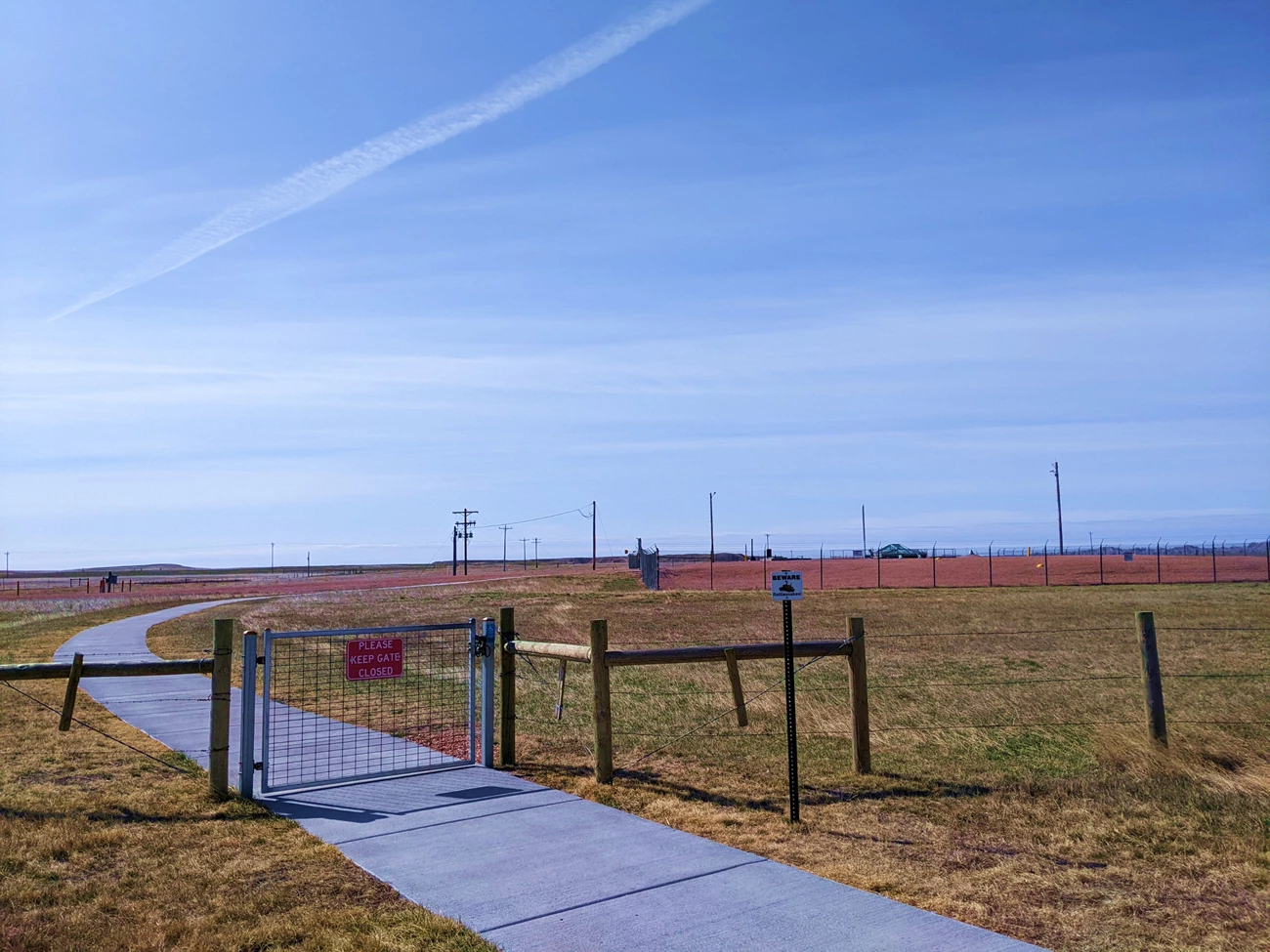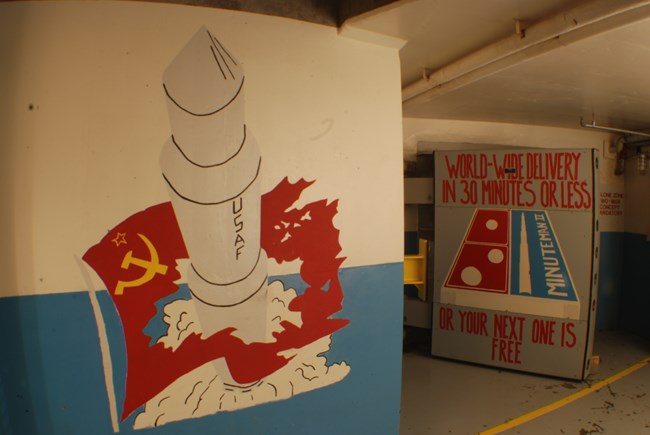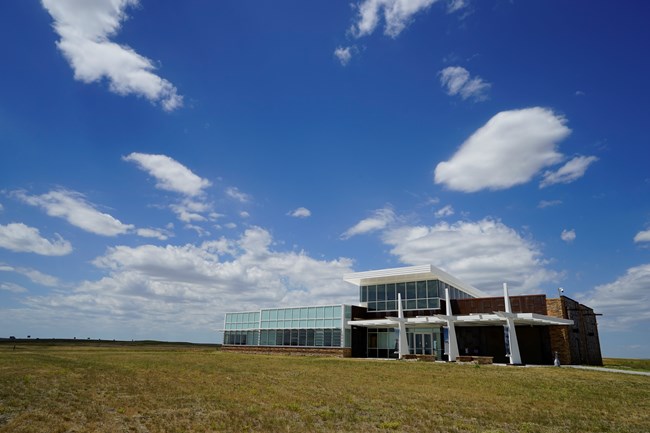
NPS/E. Watson 
NPS/J. Milbrath Minuteman Missile National Historic Site protects two facilities that were once part of a Minuteman Missile field that covered the far western portion of South Dakota from 1963 through the early 1990s. There were 15 Launch Control Facilities that commanded and controlled 150 Launch Facilities (Missile Silos) holding Minuteman Intercontinental Ballistic Missiles. The park preserves two of these facilities in their historic state—Launch Control Facility Delta-01 with its corresponding underground Launch Control Center and Launch Facility (Missile Silo) Delta-09. These two sites, along with the Minuteman Missile Visitor Center, comprise Minuteman Missile National Historic Site. 
NPS/M. Hosking The missile field was operational, 24 hours a day, seven days a week, for 365 days a year, for thirty years. Despite the searing summer heat and brutal winter cold of South Dakota, operational status of the missiles was maintained at all times. Meanwhile, local landowners and members of small towns in the central and northern Great Plains lived literally side by side with nuclear weapons. In the background to all this, were the American people who enjoyed unsurpassed freedoms and prosperity yet also knew that their way of life could be destroyed in a matter of hours by nuclear war. This same harsh fact was true for nations all around the world. The democratic capitalist system of the United States and its allies vied with the communist totalitarian system of the Soviet Union and its allies. The Cold War was fought through economics, politics, culture and indirect military confrontation. The Soviet Union eventually collapsed, but not before the world had come close to destruction on several occasions. 
NPS/J. Milbrath Minuteman Missile National Historic Site's purpose is to tell the story of Minuteman Missiles, nuclear deterrence and the Cold War. Delta-01 and Delta-09 are striking examples of the alert status of United States nuclear forces during this time period. These sites, along with the exhibits in the Minuteman Missile Visitor Center, help visitors understand the story of one of the most important eras in both American and World History. The park presents an opportunity to reflect on a peaceful prairie that once held the power to destroy the world, serving as a public venue for examining the challenges and paradoxes of Cold War. Exhibits share stories of the technology that made it possible, service men and women, citizens near and far who feared the worst, the call for civil defense, and leaders at home and abroad who led the world to the brink and back. |
Last updated: January 31, 2023
